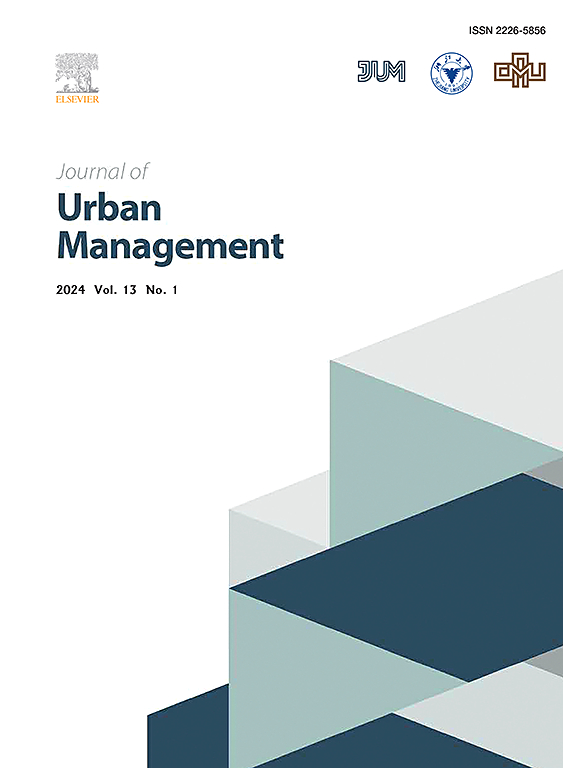The joint impact of road density and width on road network performances —a simulation approach based on macroscopic fundamental diagram
IF 5
2区 社会学
Q1 URBAN STUDIES
引用次数: 0
Abstract
The urban transportation system is vital for efficient daily travel. Understanding how urban road network density and width influence traffic performance is crucial for informed decision-making in urban planning. In this study, we designed three homogeneous square road networks with varying densities and conducted simulation experiments. By controlling for heterogeneity in road network structure and variables such as network size, road area ratio, and traffic input, we ensured effective comparison of simulation results. Using the macroscopic fundamental diagram (MFD) model, we analyzed metrics including MFD scatter dispersion, changes in experimental results with different vehicle arrival patterns, distortion of the MFD image with varying traffic volume, MFD slope variations, and maximum outflow rates. This analysis enables comparison of road network performance under different vehicle arrival rates and traffic input variations, exploring the impact of the "narrow and dense network" strategy on reliability, stability, and efficiency. In addition, the results of our proposed scatter fitting method are similar to previous clustering-then-fitting methods and compensate for the challenges in critical point estimation. Results indicate that, while maintaining a constant road area ratio, higher density improves network reliability but may initially decrease stability, while efficiency varies with traffic conditions and examination angles. These findings elucidate the interplay between road network density, width, traffic state, and macroscopic performance, providing a basis for rational urban road network construction.
道路密度和宽度对路网性能的共同影响——基于宏观基本图的模拟方法
城市交通系统对日常高效出行至关重要。了解城市路网密度和宽度对交通性能的影响对城市规划中的明智决策至关重要。在本研究中,我们设计了三个不同密度的均匀方形道路网,并进行了模拟实验。通过控制路网结构的异质性以及路网规模、道路面积比、交通投入等变量,保证仿真结果的有效比较。利用宏观基本图(MFD)模型,分析了MFD散射散度、不同车辆到达模式下实验结果的变化、不同交通量下MFD图像的畸变、MFD斜率变化和最大流出率等指标。该分析比较了不同车辆到达率和交通输入变化下的路网性能,探讨了“窄网密网”策略对可靠性、稳定性和效率的影响。此外,我们提出的散点拟合方法的结果与之前的聚类再拟合方法相似,并弥补了临界点估计的挑战。结果表明,在保持一定道路面积比的情况下,较高的交通密度提高了网络的可靠性,但可能会初步降低网络的稳定性,而效率则会随着交通条件和检查角度的不同而变化。研究结果阐明了路网密度、路网宽度、交通状态与宏观性能之间的相互作用,为城市路网的合理建设提供了依据。
本文章由计算机程序翻译,如有差异,请以英文原文为准。
求助全文
约1分钟内获得全文
求助全文
来源期刊

Journal of Urban Management
URBAN STUDIES-
CiteScore
9.50
自引率
4.90%
发文量
45
审稿时长
65 days
期刊介绍:
Journal of Urban Management (JUM) is the Official Journal of Zhejiang University and the Chinese Association of Urban Management, an international, peer-reviewed open access journal covering planning, administering, regulating, and governing urban complexity.
JUM has its two-fold aims set to integrate the studies across fields in urban planning and management, as well as to provide a more holistic perspective on problem solving.
1) Explore innovative management skills for taming thorny problems that arise with global urbanization
2) Provide a platform to deal with urban affairs whose solutions must be looked at from an interdisciplinary perspective.
 求助内容:
求助内容: 应助结果提醒方式:
应助结果提醒方式:


